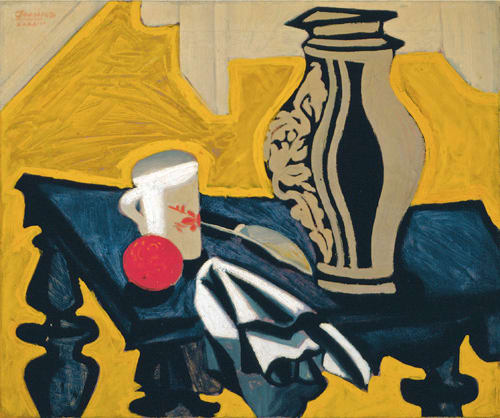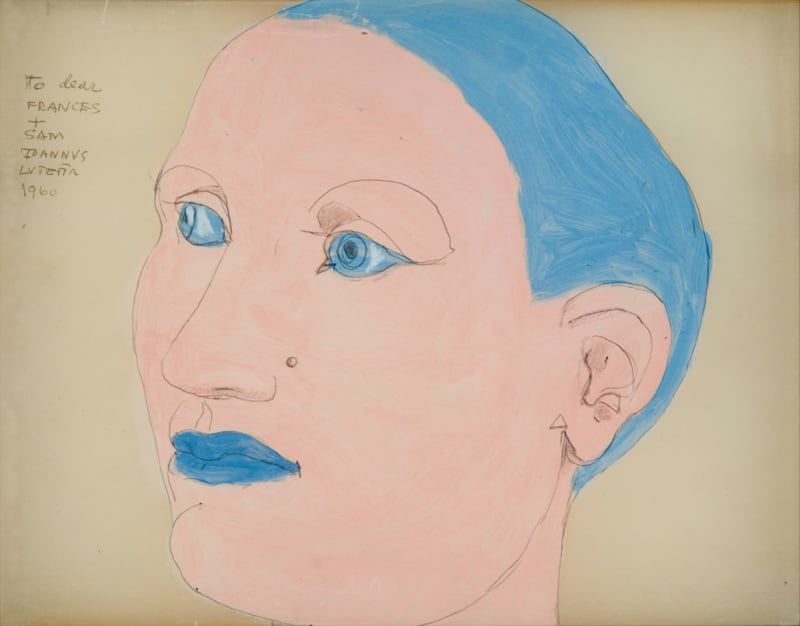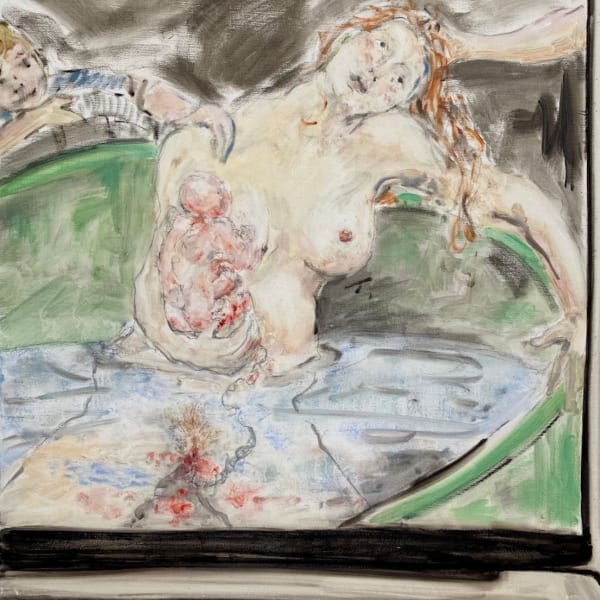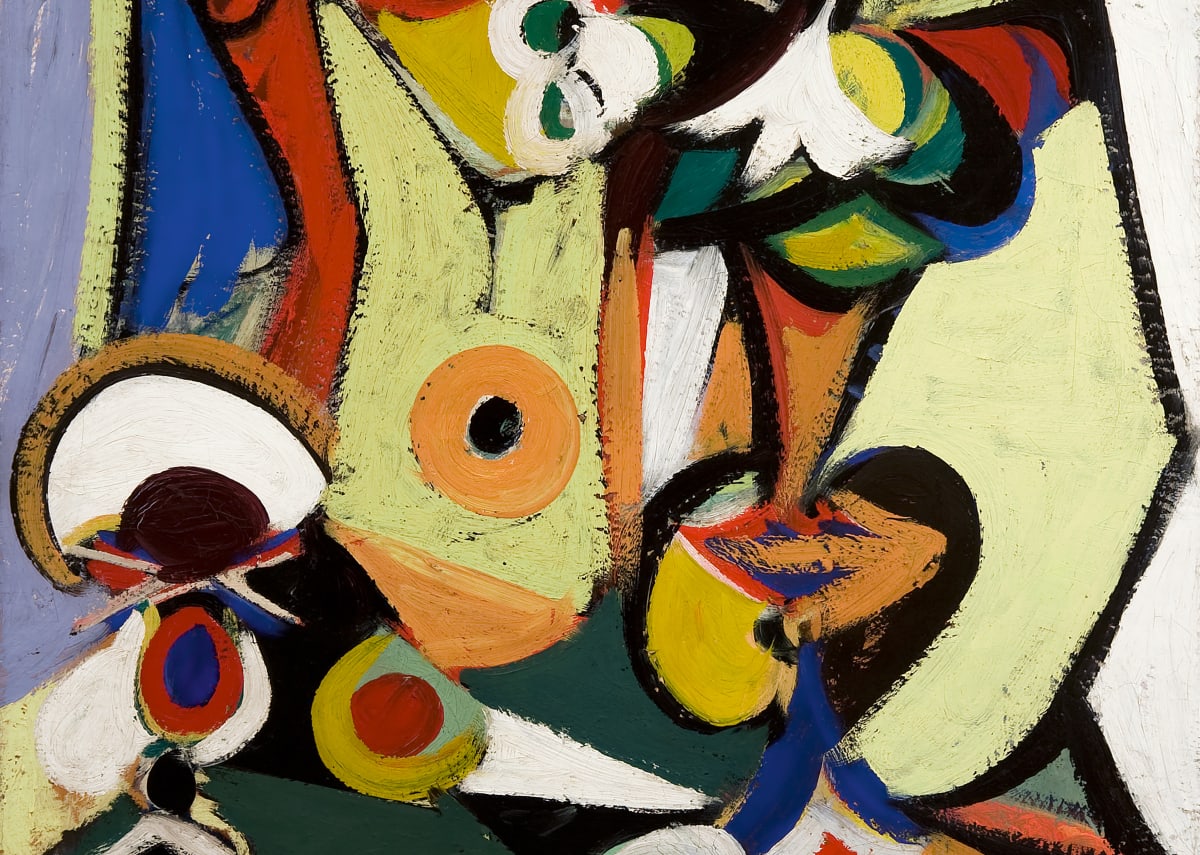
The story of twentieth-century American art, particularly the emergence of the New York School, holds a special place for artist and art-world impresario John D. Graham.
The story of twentieth-century American art, particularly the emergence of the New York School, holds a special place for artist and art-world impresario John D. Graham. An eccentric of aristocratic bearing, he cloaked many of the details of his early life in colorful mythology of his own creation, but we know that he was born Ivan Gratianovich Dombrovski in Kiev. He served as a cavalry officer in the czar’s army during World War One, escaped to Poland, and later France, when the Bolsheviks seized power in 1917, and arrived in New York in 1920, where he anglicized his name. In the early 1920s Graham received what is believed to be his first formal art training at the Art Students League, where he briefly assisted Ashcan School painter John Sloan.
The story of twentieth-century American art, particularly the emergence of the New York School, holds a special place for artist and art-world impresario John D. Graham. An eccentric of aristocratic bearing, he cloaked many of the details of his early life in colorful mythology of his own creation, but we know that he was born Ivan Gratianovich Dombrovski in Kiev. He served as a cavalry officer in the czar’s army during World War One, escaped to Poland, and later France, when the Bolsheviks seized power in 1917, and arrived in New York in 1920, where he anglicized his name. In the early 1920s Graham received what is believed to be his first formal art training at the Art Students League, where he briefly assisted Ashcan School painter John Sloan.
As his early career unfolded throughout the 1920s, Graham explored a variety of styles. His work in this decade ranges from energetic, expressive post-Impressionist still lifes to restrained, monochromatic studies inspired by Picasso. In 1925 Graham settled in Baltimore for a few years with his third wife, artist Elinor Gibson. In Baltimore, he became acquainted with collector Duncan Phillips, who gave Graham his first solo exhibition at his Washington, D.C., gallery in 1929.
Graham maintained his ties to Europe with frequent travel to Paris. By the 1930s, Graham had gained notoriety in New York art world circles as an emissary of European modernism, particularly surrealism. At the same time, exhibitions of his work at the Zborowski Gallery in Paris enhanced his credibility and helped advance his artistic career in the United States. In addition to painting, Graham established himself as an art connoisseur and collector. Perhaps most significantly, he helped Vanity Fair editor Frank Crowninshield build his famed collection of African art, purchasing many pieces for him in Paris.
In 1937 Graham authored an influential Socratic dialogue entitled System and Dialectics in Art. Graham’s book, which expressed his preoccupation with symbolism and outward manifestations of a primitive subconscious, attracted the attention and admiration of Jackson Pollock and other artists who would soon be associated with Abstract Expressionism. Although Graham himself had already moved away from abstraction, never to return to it, he was close to Pollock (whom he introduced to Lee Krasner), Stuart Davis, Arshile Gorky, David Smith, Willem de Kooning, among many others. Graham’s influence as an opinion-maker and passionate advocate for avant-garde art peaked in 1942. In that year Graham curated a noteworthy group show at the McMillen Gallery that placed work by Pollock (it was his first New York exhibition), de Kooning, and Krasner alongside work by Picasso and Matisse.
By the early 1940s, Graham had turned primarily to portraiture and self-portraiture, developing an idiosyncratic and allusive late style more connected to Old Masters like Poussin and Raphael than to the Abstract Expressionists he counted among his friends. Graham’s late paintings are characterized by the crossed eyes and flat presentation of the figures and by symbolic surface embellishments drawn from astrology, alchemy, and the occult.
Graham died in London in 1961 after several restless years of travel and ill health. Today, his work can be found in many public collections, including the Whitney Museum of American Art, New York, and the Phillips Collection, Washington, D.C. The recent John Graham: Renaissance & Revolution show at the Richard York Gallery was the artist’s first solo exhibition in 15 years. Renewed interest in Graham’s work and his prominent role in the rise of the New York School in the 1930s and 40s continues to build, as indicated by a second show, John Graham: Sum Qui Sum, at the Allan Stone Gallery in late 2005.





















